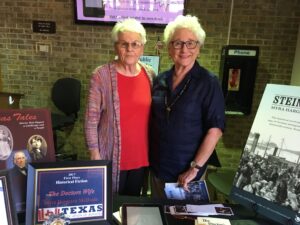
Courtesy Hispanic Life in America
“Are They Real Men?” Alicia Dickerson Montemayor, a Mexican American feminist of the 1930s, actually asked that question in an article in the LULAC News in March 1938. Montemayor was challenging what she viewed as gender discrimination and machismo in LULAC (League of United Latin American Citizens), the oldest Hispanic civil rights group in the United States.
Alicia Montemayor was born in 1902 in Laredo, long before Mexican-origin women embraced a feminist movement. After she married and had two sons, Montemayor became a social worker during the Depression investigating welfare claims by Mexican Americans in Webb County. At first, she was denied a key to the office and was forced to work under a tree. Some of the Anglo clients refused to see her, and at one point tensions grew so high that she was provided a bodyguard. Although she remained in that job until 1949, perhaps it was her treatment at the beginning of her employ that prompted her to become a charter member of Ladies LULAC Laredo, one of several women’s chapters that worked separately from the men’s groups.
When LULAC organized in 1929 in Corpus Christi, it did not include women, and for a while, women operated auxiliaries. In 1933 the annual convention of LULAC “permitted Latin American women to organize on the same basis as men.” When Ladies LULAC began opening chapters, Montemayor became a charter member of the Laredo chapter and began experiencing the sexism of Mexican American men who had organized LULAC to fight for Hispanic civil rights. The men believed women should remain at home, work in the church, and stay out of politics.
Montemayor began establishing herself in LULAC by writing articles for LULAC News. In her first article titled, “Women’s Opportunity in LULAC,” she said a woman’s place in LULAC was “in that position where she can do the most for the furthering of her fellow women.” In 1937 Montemayor became the first woman elected to the position of second national vice present general, which did not sit well with some of the male leadership and led to two events that prompted Montemayor’s article questioning the manhood of some of the male LULAC members. The first incident occurred after her election when an official wrote a letter in which he said he hoped the president would soon get well because “there are those of us who hate to be under a woman.” The next grievance came when the El Paso Ladies’ LULAC wrote three letters that were ignored by LULAC’s president. In Montemayor’s “Real Men” article she said the sexism of LULAC’s male leaders reflected insecurity, not male superiority; their Latin way of thinking caused them to believe that men are superior to women in civic affairs and administrative fields. She wrote that Real Men were not threatened by sharing power with women.
When plans developed for forming a Junior LULAC she wrote a series of essays supporting the movement and organized a coed group with the belief that youth programs would help boys and girls “abandon the egotism and petty jealousies so common today among our ladies’ and men’s councils.” To further good citizenship and become prepared for future leadership in LULAC, the young people learned debate and acting techniques, took part in public service, and improved their educational skills.
For a number of years, she worked as a registrar for the Laredo Independent School District. After retirement she became a folk artist, using bright primary colors to paint Mexican family scenes, women, portraits, and landscapes. Signing her work “Admonty,” she had solo exhibits at many venues in Mexico, Chicago, Texas, and California. A year before her death in 1989, she was honored by a presentation at the Fifty-ninth Annual LULAC Convention.

Another goodie. Thanks, Myra.
Thank you, Sandy.
There is a sad tone to this post, but it’s inspiring all the same. A woman who was able to contribute, even when the environment was hostile at times.
Yes, Shimon, I also felt it was sad.